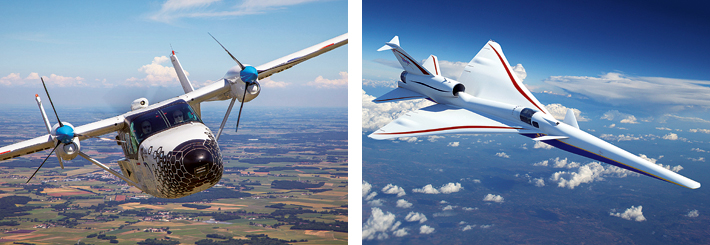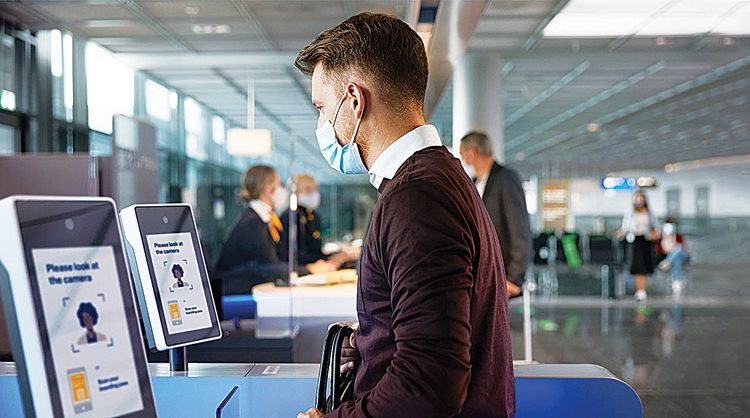INDIAN ARMED FORCES CHIEFS ON OUR RELENTLESS AND FOCUSED PUBLISHING EFFORTS

The insightful articles, inspiring narrations and analytical perspectives presented by the Editorial Team, establish an alluring connect with the reader. My compliments and best wishes to SP Guide Publications.

"Over the past 60 years, the growth of SP Guide Publications has mirrored the rising stature of Indian Navy. Its well-researched and informative magazines on Defence and Aerospace sector have served to shape an educated opinion of our military personnel, policy makers and the public alike. I wish SP's Publication team continued success, fair winds and following seas in all future endeavour!"

Since, its inception in 1964, SP Guide Publications has consistently demonstrated commitment to high-quality journalism in the aerospace and defence sectors, earning a well-deserved reputation as Asia's largest media house in this domain. I wish SP Guide Publications continued success in its pursuit of excellence.
- The layered Air Defence systems that worked superbly, the key element of Operation Sindoor
- Operation Sindoor | Day 2 DGMOs Briefing
- Operation Sindoor: Resolute yet Restrained
- India's Operation Sindoor Sends a Clear Message to Terror and the World – ‘ZERO TOLERANCE’
- Japan and India set forth a defence cooperation consultancy framework, talks on tank and jet engines
Embracing New Technology
In the coming future, air travel experiences are set to become more personalised and memorable driven by enhancements in technology

If one thing that COVID-19 did not slow down was the inexorable march of new technology in aviation, and more so in Private and Business Aviation. Rich have been growing richer. Corporates have been making huge profits even when the world has been facing slow down and inflation. Business aviation has long been at the forefront of advances in aviation technology – from winglets, to composite materials, to propulsion systems. Clearly unmanned aircraft systems, advanced air mobility, unmanned traffic management, eVTOL and commercial space are currently engaging the community.
ADVANCED AIR MOBILITY (AAM)
There has been growth in vehicles, progress on electric and hydrogen propulsion and other technologies. Safe and efficient on-demand air transportation is the future. The Sustainable Skies Act supports performance-based incentives with credit of up to $2 per gallon for fuels that achieve a 100 per cent greenhouse gas emissions reduction. It is pivotal to achieving aviation’s goal of a 50 per cent net reduction in CO2 emissions by 2050. The US National Business Aviation Association (NBAA) supports deployment of low and zero emission technologies, increase aviation environmental R&D funding, and continue air traffic management advancements.

(Right) The first flight of the supersonic Lockheed Martin X-59 QueSST project is planned later in 2022.
Indeed, a new low-altitude management system will be key to safely integrating AAM aircraft into a continually modernising aviation infrastructure. AAM companies are working on policies to address airport access, airspace management, local community engagement and other priorities. The reliability of electric propulsion as a game-changer is being spoken of. The ability to think differently about aircraft design, to build aircraft that are less expensive to operate, quieter, safer and with capabilities that we just a short time ago didn’t believe were possible. Getting the regulatory environment and manufacturing sorted is important. On August 3, 2022, the Biden administration expressed strong support for the responsible development of safe and robust advanced air mobility (AAM) at an industry Summit at the White House in order to maintain America’s leadership in global aviation.
SAFE DRONE INTEGRATION
The Unmanned Aircraft Systems (UAS) Beyond Visual Line of Sight (BVLOS) for broader commercial UAS operations is under consideration. Series of technologies and regulations are being evolved. This would include the size of the UAS, area of operation and population density etc. Currently the “right of way” practices require the UAS to yield to crewed aircraft. This is because the crewed aircraft are at a disadvantage to see much smaller and lighter UAS, particularly against ground background. This may have to change with better technology and if the AAM have to permeate in large numbers. The FAA and NBAA are working closely to enable a higher number of UAS operations in the near-term. Safety will continue to be the top priority as UAS are integrated into the National Airspace System (NAS), including assurances that UAS meet equivalent certification, airworthiness and traffic avoidance standards as crewed aircraft. UAS is a merger of the worlds of aviation, radio controlled aero-modelling, process/procedure and technology together.
There has been growth in vehicles, progress on electric and hydrogen propulsion and other technologies. Safe and efficient on-demand air transportation is the future
SUSTAINABLE AVIATION FUELS
Increasing the production and use of sustainable ready-to-use aviation fuels (SAF) is a priority to reduce aircraft carbon emissions by as much as 80 per cent compared to traditional fuel, making them a cornerstone technology in the industry’s aim of achieving net-zero carbon emissions by 2050. The target is to produce 35 billion gallons of SAF by 2050. Innovations in electric, hybrid and hydrogen propulsion are being driven.
ELECTRIC AVIATION IS HERE TO STAY
One of the trends in executive aviation that gained prominence during ACE 2021 was Cassio 1, a fully electric light airplane built by France-based VoltAero. This demonstrator aircraft, has flown more than 4,900 km across the English Channel. As Cassio’s 600-kilowatt electric-hybrid module batteries and avionics improve, larger and larger aircraft will soon fly green, permanently changing the landscape of business and commercial aviation alike.
BUSINESS AVIATION SUPPORT
Founded in 1947 and based in Washington, DC, the NBAA is the leading organisation for companies that rely on general aviation aircraft to help make their businesses more efficient, productive and successful. The association represents more than 10,000 company and professional members and provides more than 100 products and services to the business aviation community. NBAA is looking at policy changes and recruitment efforts to help the industry meet its need for 6,00,000 new pilots, technicians and other professionals in the next 20 years. Next-generation air traffic control (ATC) system is important for AAM operations and safety. 5G telecommunications interference and cyber-security of ATC communications and data-links is being addressed through lead technologies.
PREPARING FOR SUPERSONIC BUSINESS JETS
Despite concerns that the age of civil supersonic transport (SST) aircraft had ended with the Concorde’s final flight in 2003, efforts to develop a market-viable SST never waned completely. The development of passenger-carrying supersonic aircraft and quiet boom technology will be pivotal enhancements to long-range business aircraft travel, reducing travel times and increasing efficiency throughout the industry. Despite the recent shutdown of supersonic business jet developer Aerion, NASA continues to lay the groundwork for a new generation of quieter supersonic aircraft. The first flight of the supersonic Lockheed Martin X-59 QueSST (“Quiet SuperSonic Technology”) of NASA’s Low Boom Flight Demonstrator (LBFD) project is planned later in 2022. It will demonstrate a host of technologies aimed at reducing the perceived sound level on the ground from an aircraft flying faster than the speed of sound. It will move forward if the sound level is acceptable to the general public for supersonic flight over land. That would also be a big step to opening up the supersonic market. A new Kansas Supersonic Transportation Corridor (SSTC) for use in testing non-military aircraft that fly faster than the speed of sound, was announced December 17, 2020. The FAA’s moves to create new airport noise standards and flight test rules for supersonic aircraft are a boon for the nascent industry. Several manufacturers aim to introduce next-generation supersonic business aircraft and commercial airliners as soon as 2025. A next generation of quieter supersonic airplanes would halve the time to fly between major international destinations.
COMMERCIAL SPACE AND SPACE TOURISM
Companies are beginning to launch passengers into space and they are gearing up for even more civilians to become “astronauts” every year. Companies are also partnering with government agencies, providing transport to the International Space Station and launching science experiments into suborbital space. However, the bulk of commercial space revenue to date is derived from the launching of satellites into low earth orbit (LEO) and geosynchronous earth orbit (GEO), something that happens quite regularly. Integrating with existing flight operations, while encouraging innovation and new technology. It is clear that commercial space is and will continue to be a robust sector of emerging technologies.

The FAA Aerospace Forecast Fiscal Years 2019-2039 predicts an increase of more than 25 per cent growth in aerospace operations over the next 20 years. An FAA/industry committee, the Space Collaborative Decision Making and the Space Operations Committee (SpCDM SpOC), are looking at ways to mitigate the impact of space operations on the NAS and integrate these operations in a safe, efficient manner. The Space Data Integrator, an operational prototype that receives and distributes launch and reentry data for initial use within the NAS to enable improved situational awareness and airspace management.
ADVANCED TECHNOLOGIES & SENSORS
Advanced technologies and sensors work to provide flight crews the data they need to operate most effectively. Line-replaceable units including attitude and heading reference systems, air data computers, stand-alone WAAS-enabled GPS receivers, weather radars, radar altimeters and more — interface with popular integrated flight decks and retrofit flight displays in business, commercial airline and even unmanned aerial vehicle applications. Organisations are embracing big data, artificial intelligence and Internet of Things (IoT) technologies, technological and safety challenges. Inertial Measurement Units will support autonomous UAM by providing location information when GPS isn’t available. There are enormous innovation going on in weather radar. Honeywell’s Intu-Vue 3-D Weather Radar, for instance, can detect turbulence out to 60 nautical miles and offers hail and lightning prediction. Artificial intelligence (AI) will likely first be used as a tool to aid pilots for situational awareness or precision control. It will alter take-over as co-pilot. For completely autonomous vehicles, like drones it is a huge aid. Augmented reality, till now used on helmets of military pilots, will soon find place in helmets and cockpits on aircraft of all sorts. The networking of disparate products and services into a Connected Aircraft will be the technology that will have the biggest effect on safety. It will provide better information to pilots and operators, and will power more efficient maintenance.
With the integration of biometric systems for border control, airport check-ins, onboarding, migration formalities, the entire verification process will soon become paperless
There are five major drivers of the changing aviation industry – Society, Environment, Politics, Economy, and Technology. With futuristic, alternate travel modes such as hyper-loop, with the growing prominence of the highly sophisticated AR/VR technology, the aviation industry is in a rather dynamic state. The International Air Transport Association (IATA) has determined the technologies and factors that will define how aviation industry will shape up in its recent report on “Future of the Airline Industry 2035.” The report identified cyber-security, robotics and automation, 3D printing, new manufacturing techniques, virtual reality, augmented reality, IoT, big data, alternative fuels and energy sources, new aircraft designs, alternative modes of rapid transit, and geospatial technology to be prominent in the future of the aviation sector.
Biometric technologies such as facial recognition, fingerprint authentication, and retinal scanning will become the default way of verification. With the integration of biometric systems for border control, airport checkins, on-boarding, migration formalities, the entire verification process will soon become paperless. This will further extend to baggage claim process, allowing passengers to keep real-time track of their luggage. The airline passengers will expect even in-flight connectivity in the coming days, getting rid of the need to disconnect phones in the air.





